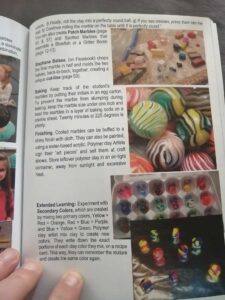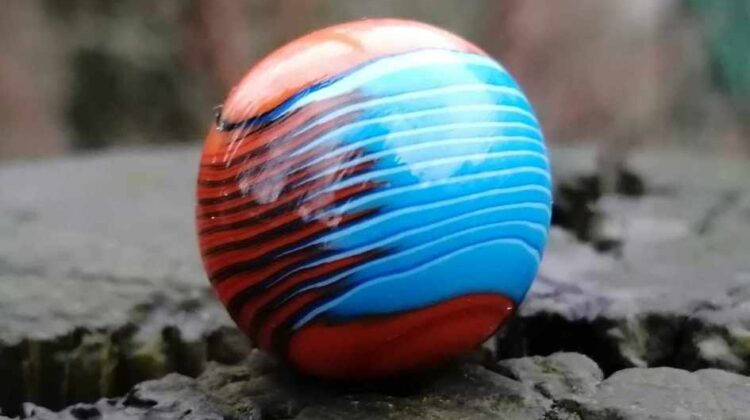
Stéphane Balasa, Cergy-Pontoise, Ile-De-France, France
I have been a polymerist for about 10 years in France. I was influenced by the work of Carl Fischer, Dave Becker, and my first marble purchase came from Blaine Allan Green.[2] I always wanted to make marbles. Unfortunately it was not possible for me to work with hot glass manufacturing.
So polymer was a solution that I immediately adopted. First of all it was necessary for me to learn how to make the marbles round. I have developed a technique, where it is possible to take a photograph of my marbles without flat spots appearing. This is obvious in the photographs which I sent along with this story.
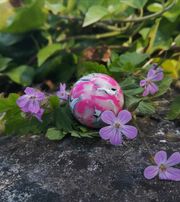
I use several different kinds of polymers. Each polymer brings something unique to the process depending on what I want to do. The flame patterns, for example, are best done with a hard polymer.
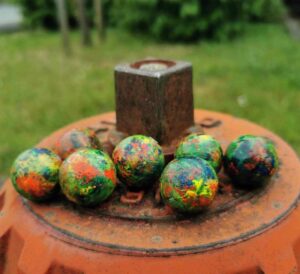
I have recently started using paint. I really like certain old marbles from East Germany[3], GDR. They are super UV and I love the result, even if my wife doesn’t like it lol. I experimented with collage and with paper and resin.
Here are those made with paint but the base is a plain colored polymer clay, also baked and sanded.
Later on, I continued to experiment and I created these marbles. They are print. The process is the same as polishing your fingernails. My polymers are cooked, sanded with two 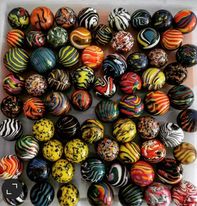 different grits, then rubbed by hand to shine them. You can see the results in the feature photograph.
different grits, then rubbed by hand to shine them. You can see the results in the feature photograph.
My wife even participates in the process. Then the marbles are varnished in several layers. I use two different kinds of varnish: either to protect the patterns or to make them more shiny. The results speak for themselves!
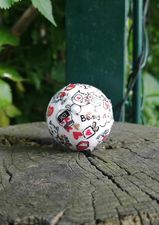
Here is an example of the nail polishing process. The prints are protected by a varnish. In the future I will surely use a resin as a much more effective protection in the long term. Still, even my trial marbles keep their shine for many years.
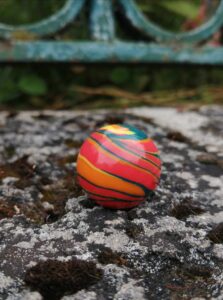
Here is another new process that I can reveal. On this polymer the result is much more natural.
I like polymer, but not when it is too obvious. And I like when someone asks me, “is it made of polymer? I thought it was glass.”
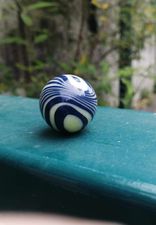
This is an example of one of the most recent which I made.
I made it in a simple way by making a cane, stretching it, then bringing it back I have these two colors, navy blue and citrine yellow. Simple and beautiful.

I used a round cookie cutter to make this type marble. They turned out beautiful! The cookie cutter assembly is the secret of my success.
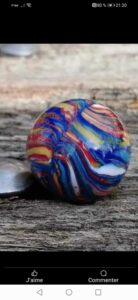
Another example of a cookie cutter marble, but with different polymer clay.
For me the difference is obvious.
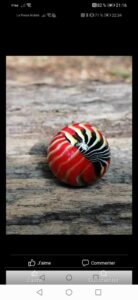
.
Here also the same process with a cookie cutter and again a different polymer clay.
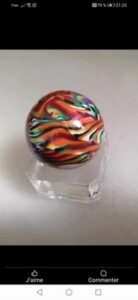
For this one, I used a cutting technique.
From there, I said to myself, I have to note the different ways of doing it in order to remember them, and then duplicate the result.
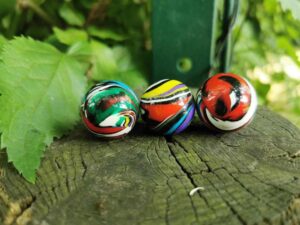
Here a nice result, inspired by some contemporary Marbles.
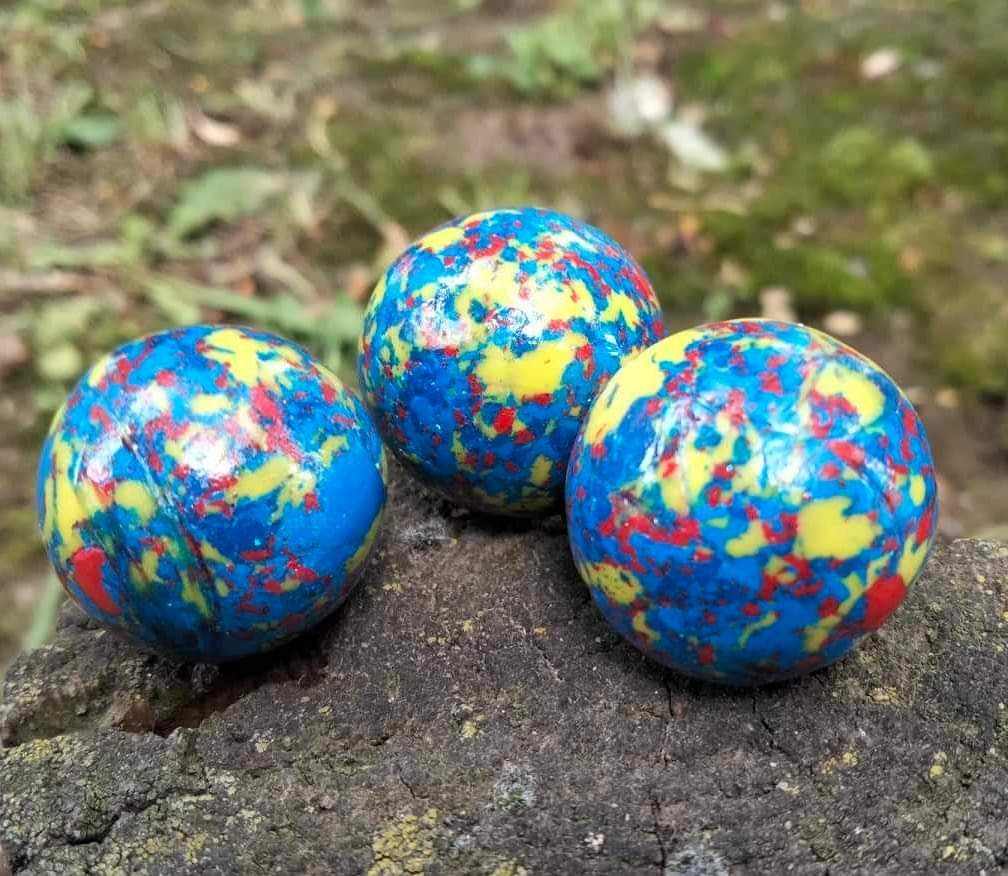
Here a trial to make confetti only with polymer clay. I grated the colors which I wanted to mix and then made the marbles.
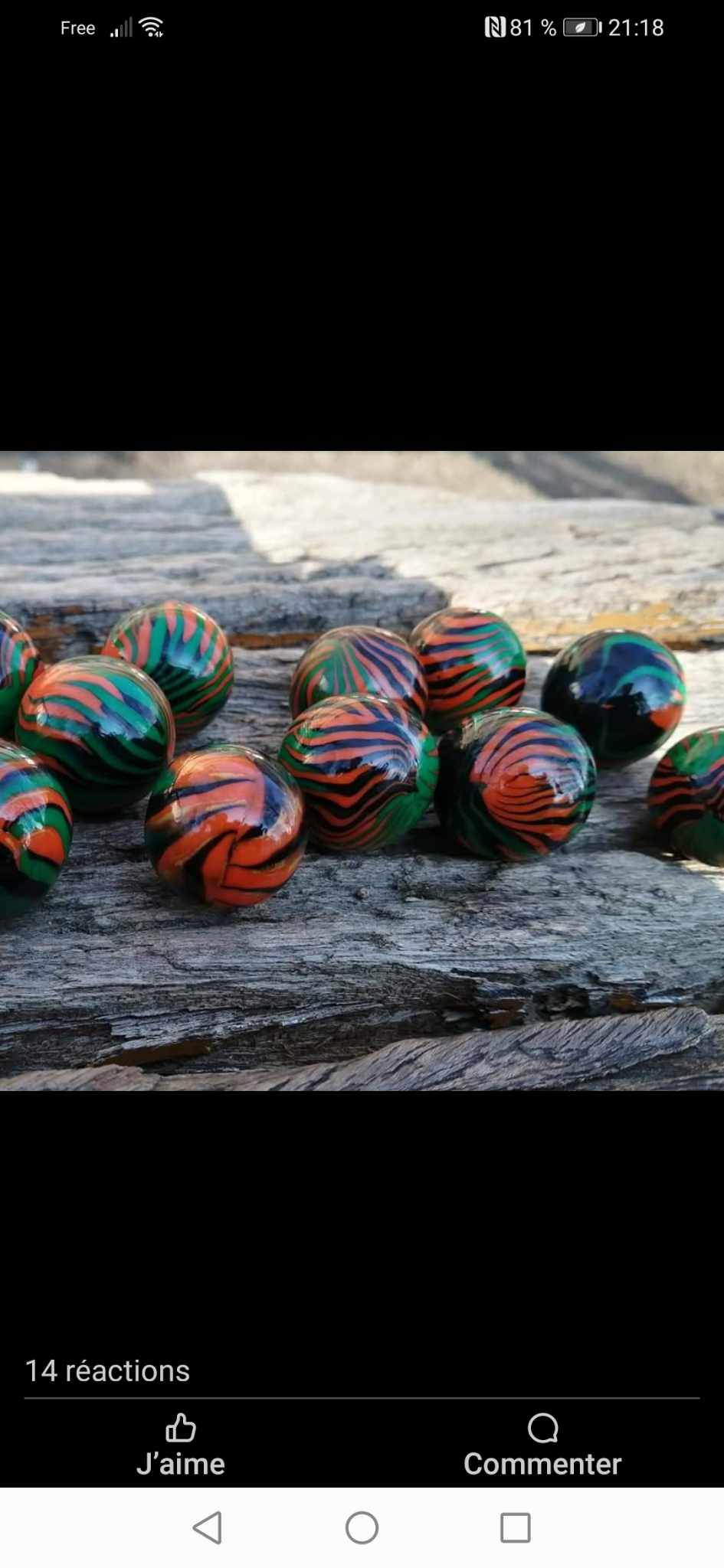 .
.
A magnificent group, with well chosen colors.
I have no idea about the exact colors, but I have confidence in my vision of beauty.
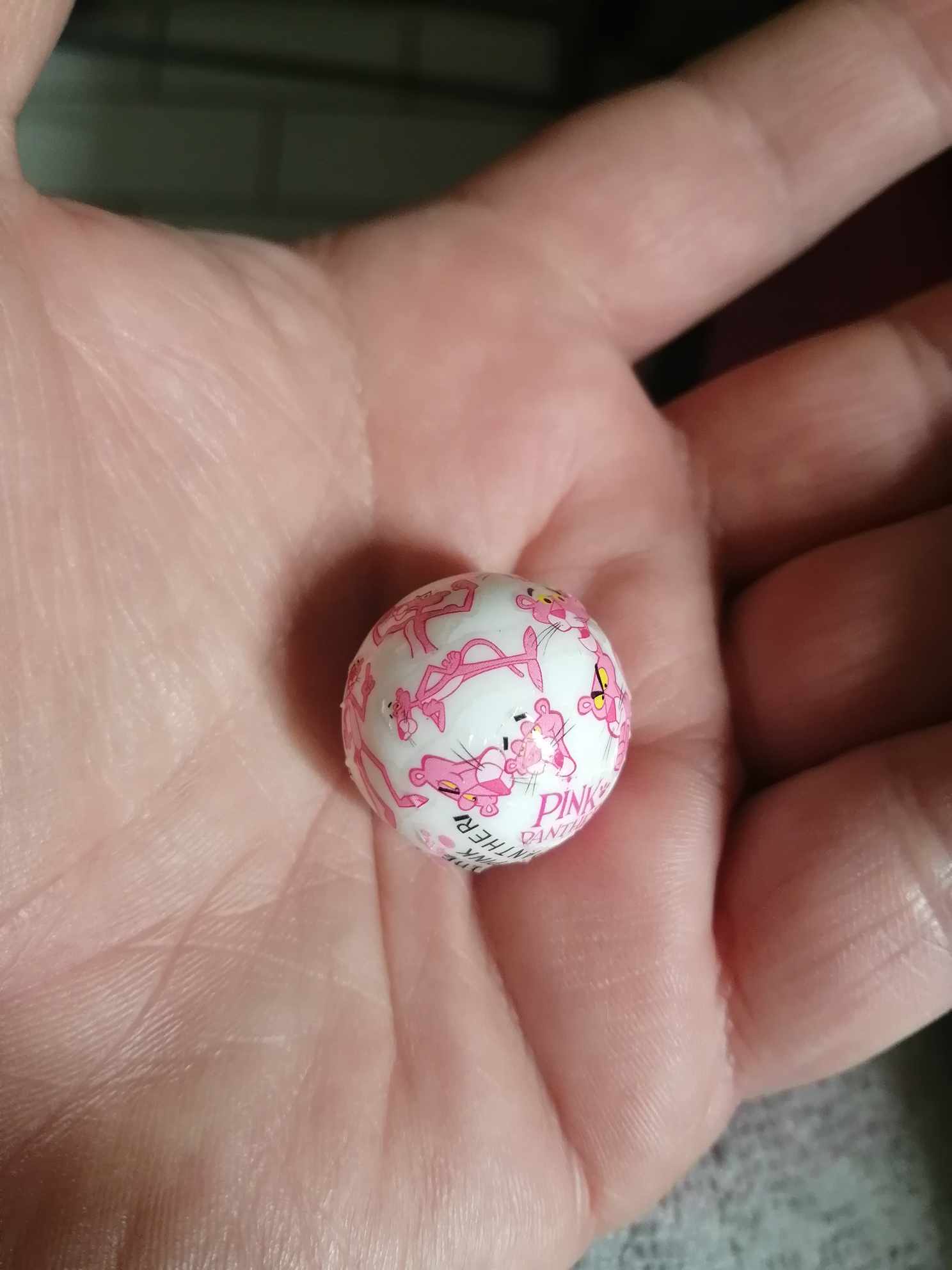
The Pink Panther print. My youngest daughter is eight and she helps me with the prints and then I varnish them. Editor’s note: We think it is wonderful when an artist can include his or her family in their art!
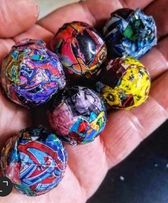 .
.
To create these marbles I used experimental polymers, paper collages, and UV resin[4]
I will come back to this type of trial because I find it promising.
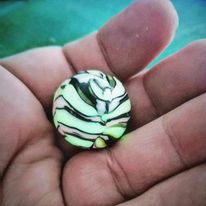
A UV polymer that I love.
Editors Note: 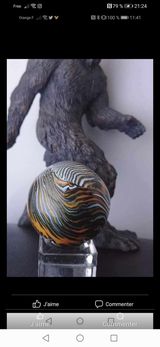 We will leave Stéphane in his studio and let him get back to work. We are intrigued with his outstanding science which he blends into art. Each and every marble is different, creative, and inspired.
We will leave Stéphane in his studio and let him get back to work. We are intrigued with his outstanding science which he blends into art. Each and every marble is different, creative, and inspired.
We are also proud that Stéphane has developed an art which he can and does share with the whole family! We cannot imagine any marble creation process more exciting than this one in which everyone can be involved!
And, finally, we did not ask Stéphane if he had a Sasquatch marble! We were writing the “…High Strangeness” story which included information about Sasquatch at the very same time that he was writing this wonderful story about polymer marbles. We both really like this Squachy marble and cannot think of any other design which could better capture the spirit of the Sasquatch phenomena.
Editors Update
We have recently heard that Stéphane and photos of some of his marbles were featured in a book.
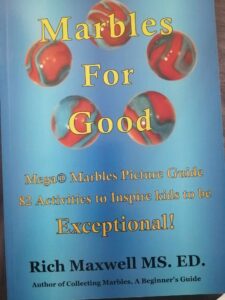
Notes
- We want to thank Stéphane for taking time from his work to write these notes for us about making polymer marbles. Polymer is a marble style and technique which we find both gorgeous and intriguing, and which we see far too few examples of. If you want to learn more about polymers then we recommend: “Explainer: What are Polymers?” @ https://www.snexplores.org/article/explainer-what-are-polymers (6/22/2024) & “Polymer” @ https://www.britannica.com/science/polymer (6/22/2024) Editors↑
- To see the work of Fischer, Becker, & Green see: https://www.carlfishermarbles.com/ (6/22/2024); http://www.biblefreak.org/marbles/web/MibID/BigChiefClayMarbles/ (6/22/2024) & https://www.facebook.com/allan.green.75457/ Editors ↑
- You might want to read our story “Lauscha & Ilmenau Marbles” @ https://thesecretlifeofmarbles.com/lauscha-and-ilmenau-marbles/ Editors↑
- Editors: “Crafting beautiful resin masterpieces is a science and an art…. If you’ve ever worked with resin, you know that curing it can be an extensive and tedious process. Fortunately, UV light has revolutionized the way we cure resin. UV light curing is a popular method used to cure resins in a matter of seconds.” UV light cure resin? [UV light] initiates a cascade of events that … that leaves resin looking crystal clear and charming? … UV light is an imperceptible form of electromagnetic radiation to the naked eye. It has a shorter wavelength than visible light, which allows it to penetrate materials and initiate chemical reactions. When UV light is used to cure resin, it triggers a photochemical reaction that causes the resin to harden.” See “How UV Light Cures Resin: A Clear and Knowledgeable Explanation” @ https://shopeverbeam.com/blogs/news/how-uv-light-cures-resin-a-clear-and-knowledgeable-explanation 6/26/2024↑

